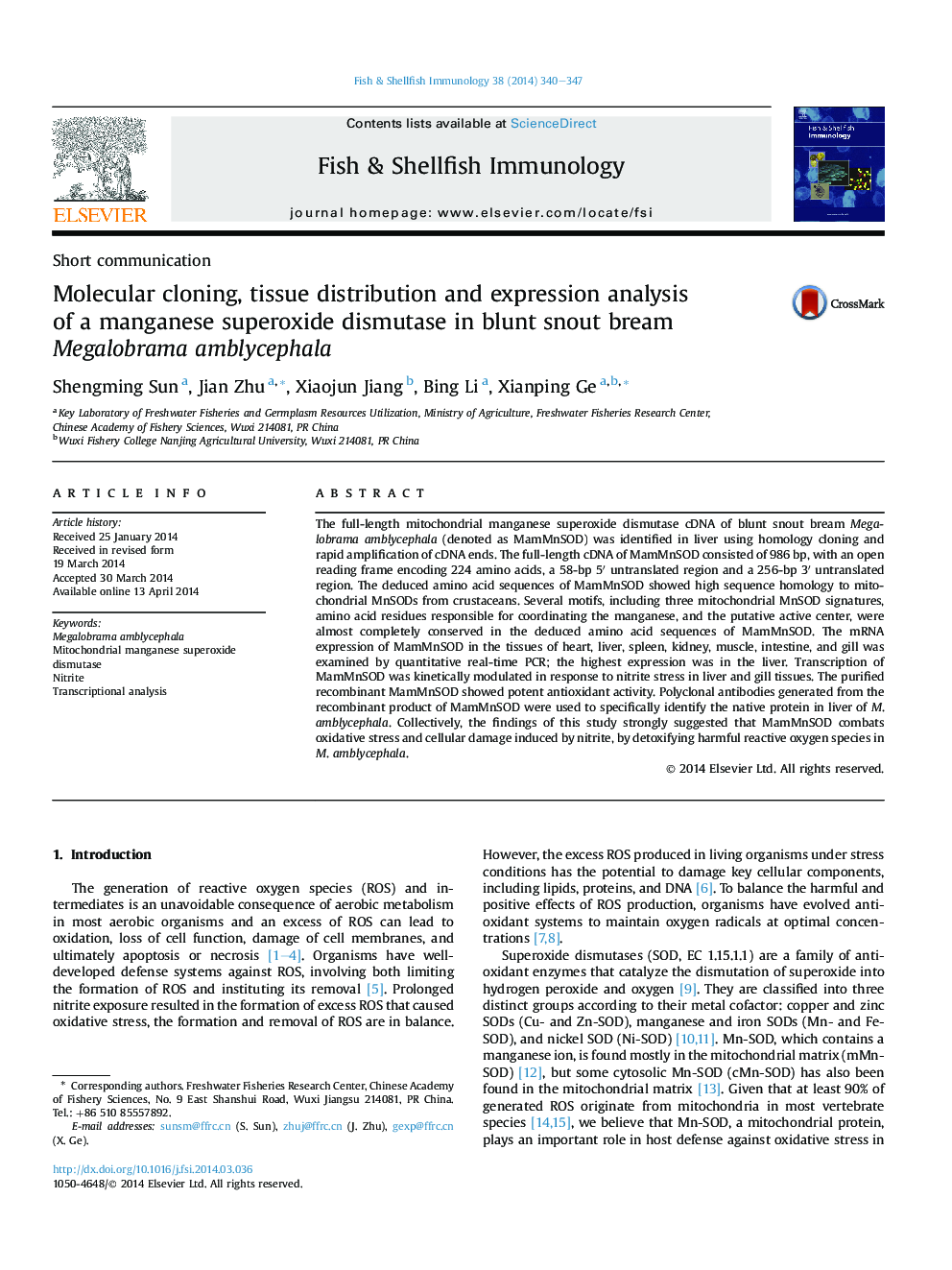| Article ID | Journal | Published Year | Pages | File Type |
|---|---|---|---|---|
| 2431657 | Fish & Shellfish Immunology | 2014 | 8 Pages |
•We cloned MnSOD of Megalobrama amblycephala for the first time.•MnSOD plays an important role in the host defense against oxidative damage.•Biochemical analysis of antioxidant activity of MnSOD using xanthine/XOD assay.
The full-length mitochondrial manganese superoxide dismutase cDNA of blunt snout bream Megalobrama amblycephala (denoted as MamMnSOD) was identified in liver using homology cloning and rapid amplification of cDNA ends. The full-length cDNA of MamMnSOD consisted of 986 bp, with an open reading frame encoding 224 amino acids, a 58-bp 5′ untranslated region and a 256-bp 3′ untranslated region. The deduced amino acid sequences of MamMnSOD showed high sequence homology to mitochondrial MnSODs from crustaceans. Several motifs, including three mitochondrial MnSOD signatures, amino acid residues responsible for coordinating the manganese, and the putative active center, were almost completely conserved in the deduced amino acid sequences of MamMnSOD. The mRNA expression of MamMnSOD in the tissues of heart, liver, spleen, kidney, muscle, intestine, and gill was examined by quantitative real-time PCR; the highest expression was in the liver. Transcription of MamMnSOD was kinetically modulated in response to nitrite stress in liver and gill tissues. The purified recombinant MamMnSOD showed potent antioxidant activity. Polyclonal antibodies generated from the recombinant product of MamMnSOD were used to specifically identify the native protein in liver of M. amblycephala. Collectively, the findings of this study strongly suggested that MamMnSOD combats oxidative stress and cellular damage induced by nitrite, by detoxifying harmful reactive oxygen species in M. amblycephala.
